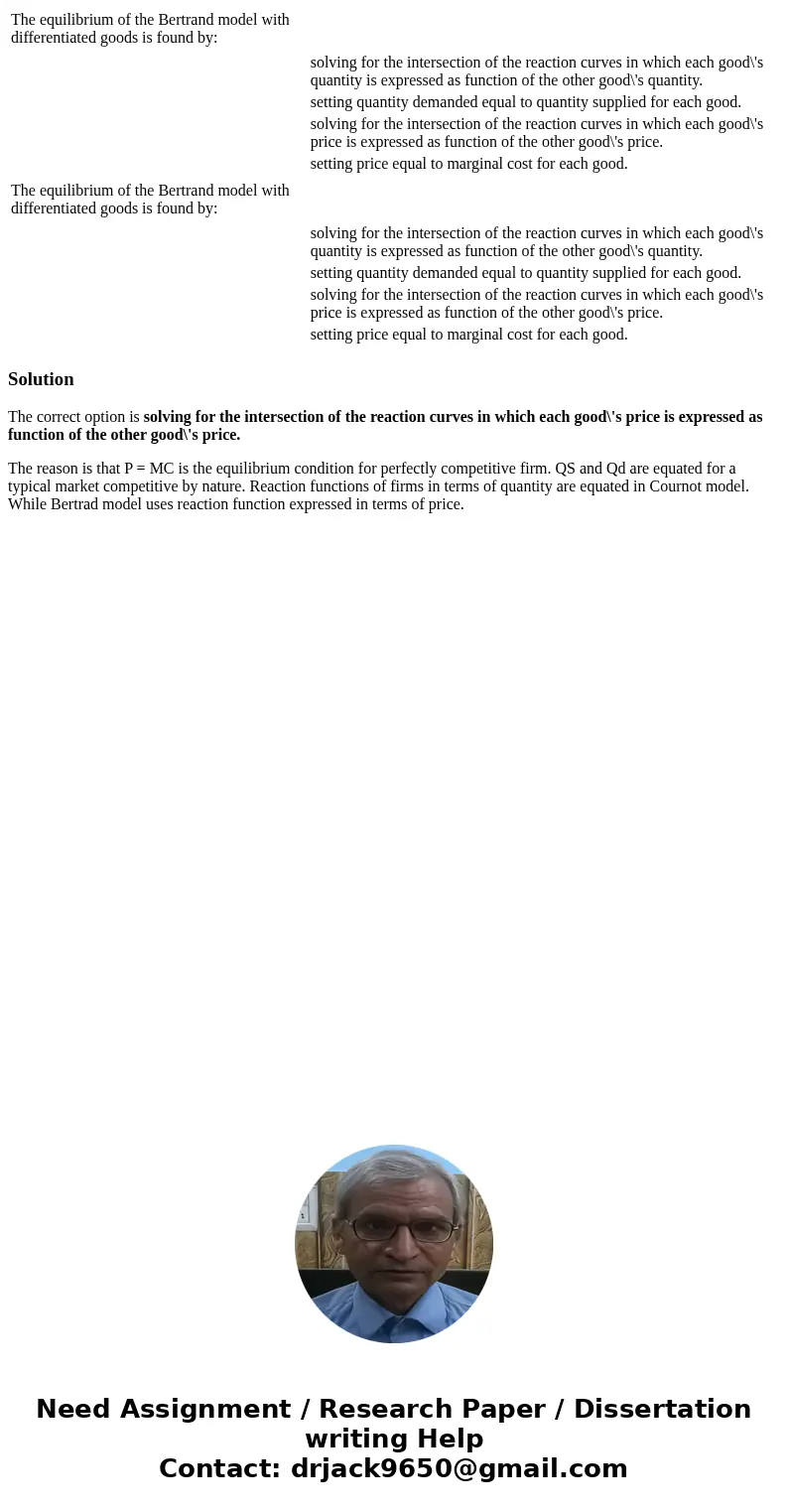| The equilibrium of the Bertrand model with differentiated goods is found by: |
| | solving for the intersection of the reaction curves in which each good\'s quantity is expressed as function of the other good\'s quantity. | | setting quantity demanded equal to quantity supplied for each good. | | solving for the intersection of the reaction curves in which each good\'s price is expressed as function of the other good\'s price. | | setting price equal to marginal cost for each good. | |
| The equilibrium of the Bertrand model with differentiated goods is found by: |
| | solving for the intersection of the reaction curves in which each good\'s quantity is expressed as function of the other good\'s quantity. | | setting quantity demanded equal to quantity supplied for each good. | | solving for the intersection of the reaction curves in which each good\'s price is expressed as function of the other good\'s price. | | setting price equal to marginal cost for each good. | |
The correct option is solving for the intersection of the reaction curves in which each good\'s price is expressed as function of the other good\'s price.
The reason is that P = MC is the equilibrium condition for perfectly competitive firm. QS and Qd are equated for a typical market competitive by nature. Reaction functions of firms in terms of quantity are equated in Cournot model. While Bertrad model uses reaction function expressed in terms of price.

 Homework Sourse
Homework Sourse